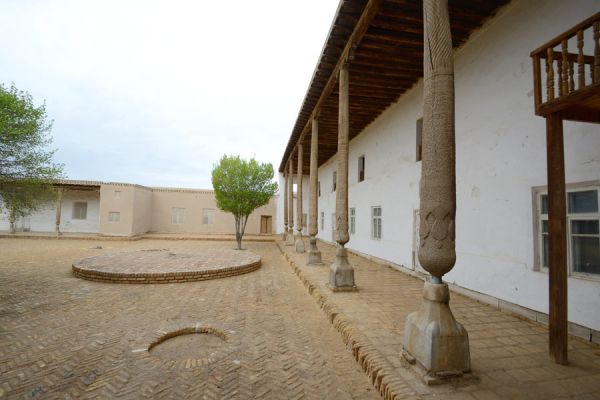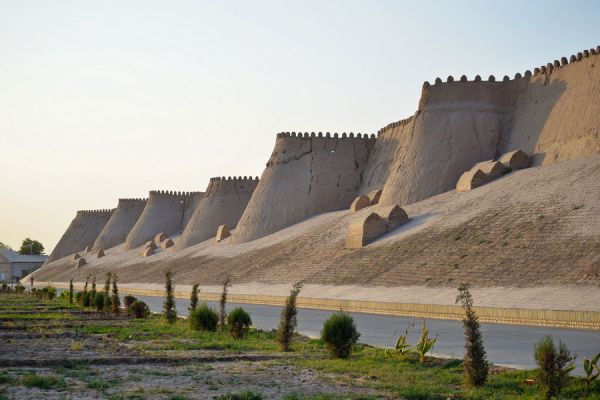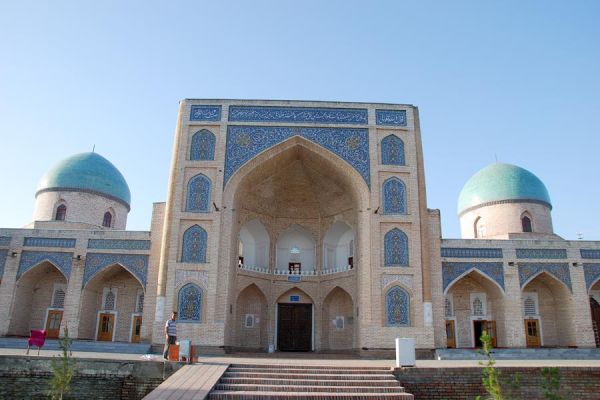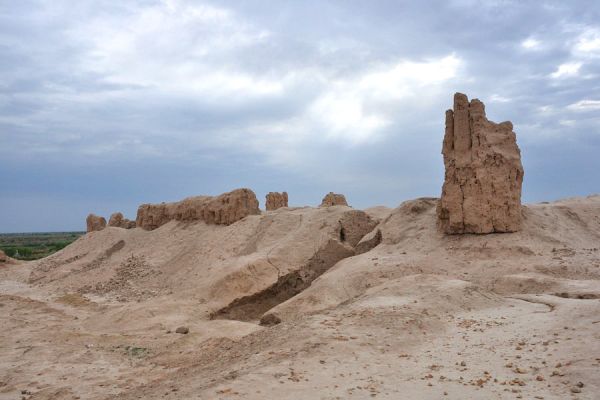Tozabog Residence
Qibla Tozabog is one of the summer residences of the rulers of Khiva, located southwest of the city borders, at a relatively short distance of two kilometers. The area of the palace is half a hectare, it was built when the Khiva Kungrat dynasty was in power.
The summer residence was built for Muhammad Rahim Khan II, the eleventh representative of the dynasty. Khan himself was 52 years old at the time, but he inherited the throne at the young age of nineteen, and over the years of his reign he managed to rebuild many religious educational institutions, mosques, and various civilian buildings. Vladyka of Khiva, in particular, founded the largest madrasah in Central Asia, unsurpassed in scale, which still bears his name.
The name of the residence, Tozabog, translates as a clean garden and, indeed, there are so many greenery on its territory that create coolness, flowerbeds with flowers that truly decorate this place. The architecture of the buildings and the interiors show the influence of Western civilization, and according to the fashion of the time, the ruler attracted architects from Russia and other countries to the construction. However, the Eastern canons have also been preserved. The residence is surrounded by a fortress wall fortified with watchtowers. The entrance to the residence is through the gate, which is decorated with elaborately executed carvings.
Currently, part of the premises of Qibla Tozabog is used for celebrations, the restaurant is open only by reservation. Guests have the opportunity to enjoy their meals in the historic interiors of the residence. In several halls, you can see painted ceilings, fancy chandeliers, and elegant furniture. If the restaurant staff is not too busy preparing for the evening event, then you will be shown the halls of the palace. A modern hotel of the same name was built next to the residence, which has a fitness center and a seasonal outdoor pool.
Architecture
Qibla Tozabog, a suburban khan's residence, the construction of which started in 1897, unites three courtyards of unequal size into a single complex. Each courtyard was built up with spacious houses with two floors, the facades were decorated with wooden columns, traditionally covered with elaborate carvings. The impressive size of the Ivan ceilings also had elegant carved railings and pillars. The Khan of Khiva himself, surrounded by his retinue, liked to walk on top of rationally arranged ceilings on sunny, hot days. The entire perimeter of the palace buildings was densely built up with various services.
The three courtyards of Qibla Tozabog are not similar to each other. The central place in the first one is occupied by a fountain with an artificial pond surrounding it, which in turn is framed by flower beds. There is also a spacious hall designed for the reception of guests and ambassadors, the interiors of which are made strictly according to European canons (in particular, the room has large light windows that are not typical for the East).
The other two courtyards combine the khan's chambers, rooms intended for the harem, warm and summer mosques, a spiritual madrasa, stalls for racehorses, and various household services. The style common to all buildings can be described as semi-European. This is due to the protectorate of the Russian Empire over the Khiva and neighboring Bukhara Khanate. Nevertheless, the palace does not deviate from the main canons of Oriental architecture, and this affects the surrounding landscape: the buildings are surrounded on all sides by magnificent gardens that protect them from the scorching rays of the southern sun on scorching hot days.
The material for the construction was exclusively fired brick. Carvings on white ganch (an analogue of gypsum) formed the main decoration of the walls, to top it all covered with pure gold. The order for the entrance doors for the interior rooms and reception halls was carried out by a special invitation from an experienced craftsman from Russia. In general, the summer Khan's palace Tozabog is one of the architectural and landscape gems of Khiva, which appeared in its bosom at the end of the 19th century.





















